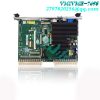Description
Many products have not been listed yet. For more products, please contact us
If the product model is inconsistent with the displayed image, the model shall prevail. Please contact us for specific product images, and we will arrange for photos to be taken and confirmed in the warehouse
We have 16 shared warehouses worldwide, so sometimes it may take several hours to accurately return to you. We apologize for any inconvenience caused. Of course, we will respond to your concerns as soon as possible.
VMIVME-5530S Other names:
Input/output module VMIVME-5530S
VMIVME-5530S Analog Controller
Digital quantity module VMIVME-5530S
Overview
The VMIVME-5532 link is a high-performance but easy-to-use link that connects two or more VMEbus systems together through fiber optic cables. This repeater link is a dual board group that allows the I/O board of the VMEbus slave located in one pending VMEbus chassis to be executed by the VMEbus host residing in another chassis. Generally speaking, the VMEbus chassis where the VMEbus host is located is called the main chassis, and the VMEbus slave chassis board is located in the slave chassis.  However, VMIVME-5532 also allows local VME bus hosts to operate from within the chassis for local control, providing multiple hosts from within the chassis. The dual board kit configuration is shown in Figure 1, where one board is designated for the main chassis and the other board is designated for the chassis. The main VMEbus chassis can be connected to multiple slave chassis communication relays in a star configuration,
However, VMIVME-5532 also allows local VME bus hosts to operate from within the chassis for local control, providing multiple hosts from within the chassis. The dual board kit configuration is shown in Figure 1, where one board is designated for the main chassis and the other board is designated for the chassis. The main VMEbus chassis can be connected to multiple slave chassis communication relays in a star configuration,
The specific functions of the VMIVME-5530S fiber optic repeater link board include:
Signal reception: Firstly, the fiber optic repeater link board will receive fiber optic signals from the transmitting device. This signal may gradually weaken during transmission, so the relay needs to process it.
Signal amplification: The fiber optic repeater link board amplifies the received fiber optic signal to ensure it has sufficient strength to maintain stability during long-distance transmission. The amplified signal has higher quality and longer transmission distance.
Resend signal: After signal amplification, the fiber optic repeater link board will resend the signal to the target device or network segment. In this way, signals can be transmitted over longer distances, thereby achieving network expansion.
The fiber optic repeater link board plays a crucial role in fiber optic communication systems. It can effectively extend the transmission distance of fiber optic signals, improve the transmission quality of signals, reduce signal attenuation and distortion, and ensure reliable data transmission. At the same time, the fiber optic repeater link board can also achieve connection and conversion between different fiber optic networks, providing important support for the flexibility and scalability of fiber optic communication systems.
This link is software transparent. Any VMEbus master motherboard can access (read or write) any board from the chassis. Only non disruptive slave boards are allowed to be used in the slave chassis. The link between the host box and the slave box is when the VMEbus host (usually CPU board) addresses any board in the slave box. At any time when the host in the main chassis issues a VMEbus read/write cycle, it will be repeated to the slave chassis. If any slave board in any slave chassis responds to the address, data transfer (read or write) will occur between chassis, and data transfer acknowledgments (DTACKs) will be generated to the host (in the master chassis) to complete the cycle from the relays including bus arbiters, bus requesters, and bus controllers, system controllers, and control/status register operations and monitoring slave chassis for redundant relay links or multi host applications, as shown in Figure 3. The Bus Arbitrator (SGL) and the slave chassis that uses the system controller when the slave board occupies a slot. The Bus Request Program (ROR Control/Status Register) allows the host CPUVMEbus chassis in the host to monitor and obtain bus master control using the slave chassis of Bus Request Level 3 (BR3). A control bit (burst mode) to allow the host CPU to request and take control of the bus as long as you wish. The key register is also included, and the host CPU needs to load the code before setting the burst mode bit. The chain routes two boards (VMIVME-5532M and VMIVME-5532S) and two VMEbus enabled cable systems to extend beyond a single chassis.
All products on this website are special products, and market prices have been fluctuating,
The specific customer service quotation shall prevail, as the product is a new product and the price is not genuine,
Please confirm the model, product, price, and other detailed information with customer service before placing an order. The website has been used,
The new one is for sale, please contact customer service to communicate.
Warehouse discount product recommendation:
VMIVME-7698–140
VMIACC-5595–208
VMIACC-5595–208
VMICPCI-7806–211000
VMIPMC-5565
VMIVME-2540–300
VMIVME-4140–000
VMIVME-3215–000
More……



.jpg)


-100x100.jpg)

-300x300.jpg)
Reviews
There are no reviews yet.